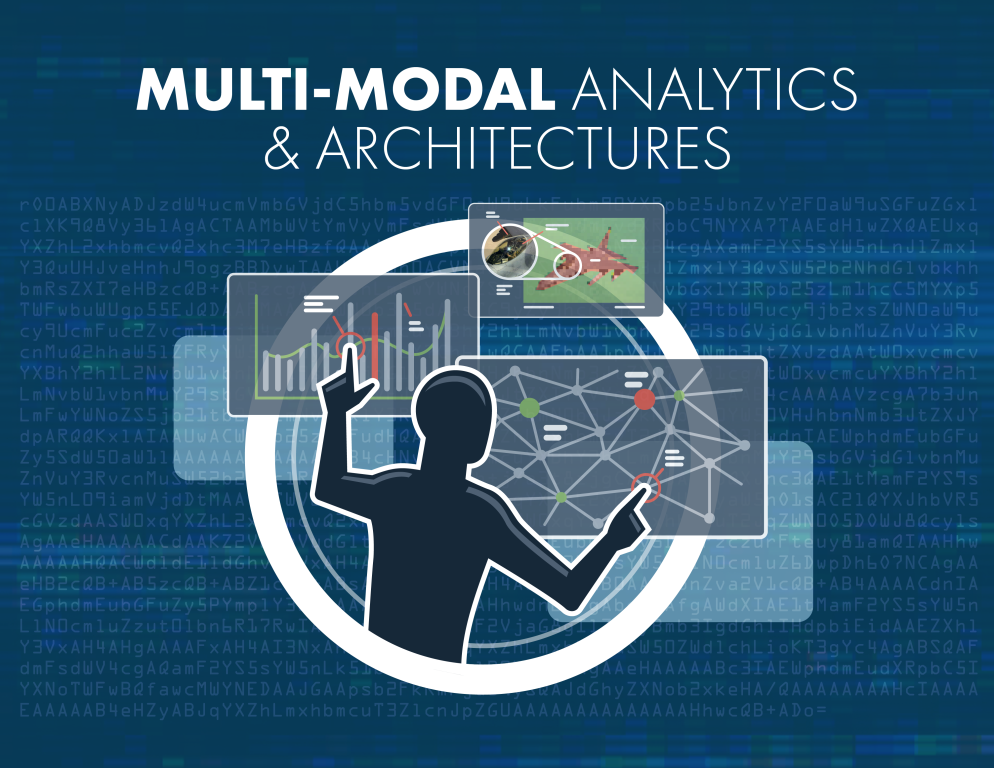Multi-Modal Analytics & Architectures

One of the newest and fastest growing groups at ORNL is the Multi-Modal Analytics & Architectures Group, which researches and develops tools that capture, enhance, analyze, infer, and visualize complex datasets for analysts. The group’s vision statement is twofold: “Secure our nation through developing and deploying data analytics solutions to address complex problems.”
A hallmark of this group of researchers is their ingenuity at inventing tools and processes that bolster national security through revolutionary advancements in data analytics. The unprecedented volume and complexity of data produced by today’s sensing technologies is a driving force behind the nation’s need for the group’s sophisticated solutions for meaningful analysis of vast data streams in a timely manner. The group has multiple core capabilities:
- Multi-modal data analytics (signals, radar, imagery, ultrasound, etc.)
- Scalable architectures for analytics
- Artificial intelligence and machine learning
- Human-computer interaction
- Visual analytics
- Data fusion
- Computer vision
- High-performance computing
Group members hold several patents and have licensed technology to industry. Recently, for example, ORNL licensed an advanced, portable optical array developed by group members to IDEMIA Identity & Security USA to help identify individuals in challenging outdoor conditions using sensitive cameras and machine learning enhancements that produce high-quality images. As applied by IDEMIA, this technology has the potential to expedite vehicles at critical checkpoints. Another example of a deployed tools is Situ, a scalable, streaming anomaly detection and visualization tool for cyber security that can highlight suspicious behavior within huge numbers of network flows. Situ is deployed at ORNL’s Security Operations Center, where it processes about half a million network flows a day, and it is used by our High Performance Computing Group to monitor the lab’s Summit supercomputer and other systems.

